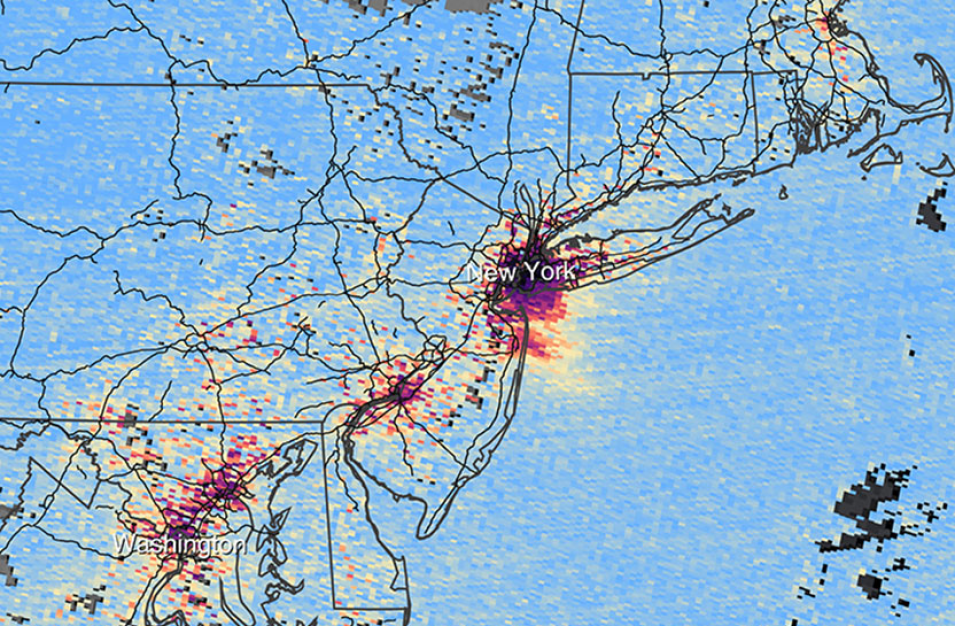As noted by the White House Environmental Justice Advisory Council, environmental justice (EJ) refers to the fair treatment and meaningful involvement of all people regardless of race, color, national origin, or income with respect to the development, implementation, and enforcement of environmental laws, regulations, and policies.
Going further, “environmental justice communities” are geographic locations within the U.S. and its territories with high concentrations of persons of color, households with low-income, or community members who are indigenous or members of Tribal nations where residents experience or are at risk of experiencing higher or more adverse human health or environmental impacts.
As part of the commitment by NASA’s Earth Science Division (ESD) to equity and environmental justice, ESD developed an Equity and Environmental Justice (EEJ) strategy. A recent ESD funding opportunity, Research Opportunities in Space and Earth Science (ROSES)-2021, A.49 Earth Science Applications: Equity and Environmental Justice, was designed to advance progress on EEJ domestically through the application of Earth science, geospatial, and socioeconomic information.
One project funded under this solicitation was the Assessment of the Gulf Coast Environmental Justice Landscape for Equity (AGEJL-4-Equity). After completion of the assessment, NASA's Earth Science Data Systems (ESDS) Program in collaboration with the agency's Open Source Science Initiative extended support to enable the project team to foster EEJ community engagement with NASA Earth observation data for residents of this region.
"The new project title, Advancing Gulf Coast Environmental Justice and Leadership and Engagement in Open Science (AGEJLE-OS), is the perfect example of how open science is enabling equity and environmental justice projects to directly empower communities by making data more findable, impactful, and meaningful," says Dr. Yaitza Luna-Cruz, an ESDS program executive.
This view is echoed by NASA Chief Science Data Officer Kevin Murphy. "The open sharing of data, tools, and knowledge, both within the scientific community and with the wider public, is more inclusive and accelerates scientific discovery," he says.
The Project and the Team
Data are a primary challenge to advancing environmental justice, and the first phase of the project investigated Earth science data use and data gaps in the Gulf region. “The environmental justice movement in many ways started in the South with the work of Dr. Beverly Wright, who is a co-leader of this project and the founder and executive director of the Deep South Center for Environmental Justice (DSCEJ), and Dr. Robert Bullard,” says Dr. Nathan Morrow, an associate professor in the Tulane School of Public Health and Tropical Medicine and another co-leader of the project. “The Gulf Coast is the fastest growing coast. It faces the largest disparities in the country in terms of health and socioeconomics. It’s at the forefront of climate change impacts and new threats.”
Along with Wright and Morrow, the project is also co-led by Dr. David Padgett, associate professor of geography at Tennessee State University. The project team is collaborating with local communities and with four regional EJ networks: the National Black Environmental Justice Network, the Historically Black College and University-Community Based Organization (HBCU-CBO) Gulf Coast Equity Consortium, the DSCEJ Community Advisory Board, and the Environmental Justice Forum.
Communiversity
The project’s foundation is a model called “Communiversity.” Developed by project co-lead Wright, the Communiversity Model integrates community life experiences regarding environmental justice issues with the theoretical knowledge of academicians. The model ensures that community members have an equal voice with researchers in developing, resourcing, and implementing projects.
Project co-lead Padgett notes that the Communiversity Model creates an equal partnership between community members and researchers and includes actual action. “It’s saying, OK, here’s the situation, here’s what your air quality looks like,” he explains. “How can you as the community, perhaps with some support from your federal agency, nonprofit organization, or university, collectively come to a resolution?”
The Communiversity Model also views community members as consultants in a project rather than volunteers, and provides compensation for their time and effort. “The consultants are being paid and the grad students are being paid and undergraduate students are being paid. And then we expect people in these communities to take up their weekends, Saturdays, evenings for a $50.00 Walmart gift card? That just doesn’t fly anymore,” says Padgett. “If you look at Dr. Wright’s budgets, you’ll see that the community-based organizations are well-compensated and very much incentivized to work. Not that they wouldn’t work anyway, but it’s a much fairer playing field and it leads to sustainability.”
The Data

